Skulls Unlimited cleans over 50,000 skulls a year.
Learn More!

How to Start an Osteological Collection.
Creating your own osteological collection at home can be a fun and educational hobby. Osteology, the study of bones, can provide insight into the anatomy and behavior of animals, both past and present. By building your own collection, you can learn about the various species of animals and their unique characteristics. Plus, it's a great conversation starter and can add a unique touch to your home decor.
Here are some steps to get started on creating your own osteological collection at home:
-
Familiarize yourself with local and federal laws regarding the collection of animal bones. In some areas, it may be illegal to collect bones from certain species or to remove bones from certain locations. Make sure you understand the laws and obtain any necessary permits before starting your collection.
-
Start by looking for bones in areas where animals are known to live or frequent. This could include forests, fields, beaches, or even your own backyard. Look for bones that are exposed on the surface or partially buried in the ground. Avoid disturbing any potential archaeological or cultural sites.
-
Once you have found some bones, carefully dig them up and clean them. This can be done by using a brush to remove any dirt or debris, and then soaking the bones in a mild solution of water and dish soap. This will help to remove any remaining dirt and bacteria.
-
Once the bones are clean, let them dry completely. This can take several days, depending on the size and thickness of the bones. Once they are dry, you can either leave them as is or apply a preservation method, such as soaking them in rubbing alcohol or applying a coat of clear sealant.
-
Once the bones are preserved, you can start to organize and display your collection. You can arrange the bones in a variety of ways, such as by animal species, by body region, or by size. You can also label each bone with its common and scientific names, as well as any interesting facts or observations.
By following these steps, you can create your own osteological collection at home and learn more about the fascinating world of animals and their bones. Just remember to always respect the laws and regulations regarding the collection of animal bones, and to treat the bones with care and respect.

Leave a comment